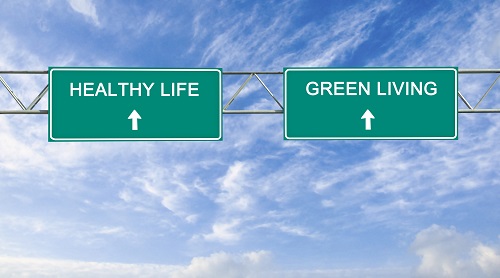
As more and more information about environmental problems and green living becomes available, it is easy for people to feel overwhelmed about how to make the transition to a more eco-friendly lifestyle. TreeLiving.com, an environmental portal that provides practical information on green living, environmentally friendly products, services, and technology, as well as news and online shows related to environmental and social responsibility, provides the following tips to help people start living greener lifestyles.
Water Conservation
Install water saving faucet aerators, showerheads and toilets which use nearly 60% less water and barely even notice the difference. Save even more by turning the tap off while brushing teeth or shaving. Even a few seconds can waste a tremendous amount of water unnecessarily. Go a step further by keeping showers short as well. This will not only help save water but saves money from utility bills.
Save Energy
The average energy use of an American household creates more than 26,000 pounds of carbon dioxide per year. Collectively, residential energy use accounts for about 20% of the country’s greenhouse gas emissions. Save money and reduce carbon pollution by flipping off the light switch when leaving a room and using Compact Fluorescent Light Bulbs (CFLs) which use up to 75% less energy and last longer than regular bulbs. Or go solar by installing solar panels which use the energy from the sun to power the home and which can significantly cut homeowner’s energy bills.
Buy Organic
Livestock occupies 30% of the earth’s surface, 33% of farmland worldwide produces animal feed, and the food then travels an average of 1,200 miles before it reaches dinner plates, all of which generates a lot of emissions, pollution and waste. Buy locally produced organic meats, produce, dairy products, and eggs, which are both good for the environment and good for our health since synthetic hormones and most conventional pesticides are not used. Just look for the USDA label that indicates the product is organic. Also consider going veggie! Each plant-based meal eaten saves 280 gallons of water and protects up to 50 square feet of land from overgrazing and deforestation.
Use Natural Cleaning Products
The average home is loaded with toxic, chemical based cleaning products which are meant to make your cleaning routine easier but in the end, are harmful not only for the family’s health but create environmental pollution during its manufacturing, daily use and disposal. There is a growing number of commercial products which are made from natural ingredients making the non-toxic and healthier for both people and the environment. Natural cleaning products can also be made at home easily, using simple ingredients such as vinegar, baking soda and water, among many others.
Reduce, Reuse, Recycle
The average American consumes 120 pounds of natural resources every day, and throws away 3 and 1/2 pounds of trash per day. Products today use so much packaging that by the end of a week it is easy to have several bags of trash fill up the garbage can. Be mindful of everything purchased and choose items with the least packaging to reduce waste. Also, think of ways that items can be reuses instead of throwing them out. Plastic containers can be used for storage, old clothes can be donated or used for rags, and used gift wrap can make beautiful school book covers! Make sure to recycle everything else if it is recyclable. Recycling materials such as aluminum cans, newspapers, and glass jars, help save energy and landfill space, conserve natural resources, and also prevent pollution.
As shown here, embracing a greener lifestyle isn’t just good for our planet, it is also good for our health and our budget, and ultimately, can help improve our overall quality of life.

